Top 25 Raspberry Pi Home Projects to Try in 2024 (+Links)
The Raspberry Pi is an inexpensive way to turn your home into a smart home. There are so many projects out there that it can quickly become overwhelming. What can I do with a Raspberry Pi to make my home smart? That’s why I made a list of the best projects you need to try.
We often imagine a smart home with automatic lights and screens everywhere. But the Raspberry Pi allows many home improvements in different categories, such as security, network and home automation.
In this article, I will show you some of the most impressive projects that I have found, and I will give you a preview of the result and a link to find all the information to set up this project.
If you’re looking to quickly progress on Raspberry Pi, you can check out my e-book here. It’s a 30-day challenge where you learn one new thing every day until you become a Raspberry Pi expert. The first third of the book teaches you the basics, but the following chapters include projects you can try on your own.
1 – Smart TV

Did you know that you can turn your old dumb TV into a smart TV for less than $50? It’s the concept of Kodi, an open-source home theater software that you can easily use on Raspberry Pi OS, OSMC or LibreElec.
This is a great project to turn your Raspberry Pi passion into something useful for the whole family. Kodi allows you to access local files from the Raspberry Pi or other devices on your network (NAS and computer shares).
You can also install additional add-ons on Kodi, just like on your phone. For example, the YouTube app is an add-on you can install on Kodi to play YouTube videos on your old TV. Add-ons are available for all major streaming providers.
It’s a simple project you can do in an hour to improve your home.
Start here if you want to give it a try: The Ultimate Guide to Install Kodi on Raspberry Pi (OSMC).
2 – Philips Hue smart light controller

If you don’t already know, Philips Hue is a smart lighting concept. You can buy a Starter Kit with a controller and two bulbs (check the price on Amazon) that you can control with a smartphone app.
My brother gave me a pack for my birthday years ago, and I’ve been using them ever since. It’s an excellent product, I really like it, and a Raspberry Pi can make it even more fun.
For typical users, the app allows you to do several things:
- Turn lights on/off on demand.
- Dim lights in-app.
- Use a timer.
- Create routines to switch lights on/off at specific times.
- Manage lighting scenarios.
But you’re not a typical user, I guess :-).
Philips also provides an API on the controller to develop scripts to manage lighting scenarios. And you probably already understand the purpose of this project.
In the link below, I’ll show you how to control your Philips lights from Raspberry Pi using Python and their API. It’s an excellent project to learn more about Python, APIs and to do something useful with your smart lights (in my house everything is automated this way).
There is an entire chapter about this in my boot on how to Master Python on Raspberry Pi. Check it out if you want to make progress with Python and Raspberry Pi.
3 – Live calendar

Another cheap project you can try is to turn your old computer screen into a smart calendar. This project is also easy to build. It’s mainly DIY with not-so-complicated technical things.
As you can see in the picture, a Raspberry Pi is connected to a monitor running Raspberry Pi OS and a web browser to open the calendar in full-screen mode.
After that, you can make minor adjustments to hide the mouse cursor and disable sleep mode or screen blanking. But that’s basically it.
If your calendar is empty and you don’t see the point of this project, think of other things you might be more interested in: it could be a web page, data from an API, news, sports scores, or whatever.
If you have some web development skills, why not create your own website with the information you are interested in (weather, emails, Facebook/Twitter counters, a live webcam, your sales stats or whatever).
You can find the original project on Instructables, and build your own from there.
4 – Plug your old printer into the network

If you still have a printer that needs to be connected to your computer all the time, you might be interested in this project.
You can connect any printer to a Raspberry Pi, which will then share that printer on the network (via cable or Wi-Fi, depending on the model you have).
This project is simple: install the software (CUPS) that will act as a print server. Then install the printer on CUPS and finally access the printer from all your other computers as if it were a modern printer directly connected to the network.
For less than $50, you can turn your old printer into a Wi-Fi printer. In the same way, you can share an old USB scanner on the network.
I have a full tutorial on this where I show you how to install CUPS to turn your USB printer into a network printer for free. Check it out for more details.
If you are lost in all these new words and abbreviations, request my free Raspberry Pi glossary here (PDF format)!
Download now
5 – Magic mirror
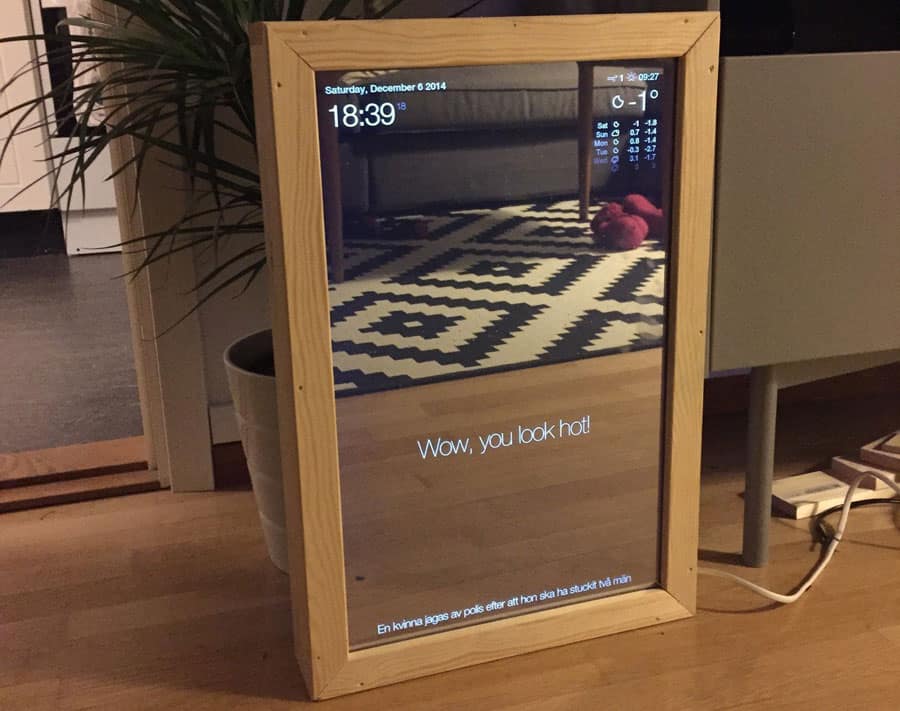
This project is well known to Raspberry Pi users, so it has its place on this list. Michael Teeuw was the first to develop this idea, which was then picked up by hundreds of people he inspired.
The concept idea is to put a mirror, a TV screen and a Raspberry Pi inside a frame. The result is extraordinary, a smart mirror that, as you can see in the photo, allows you to integrate just about anything you want.
The mirror itself is a special two-way glass that shows the text on the screen while reflecting the image like a classic mirror (you can find that on Amazon, for example). This glass is typically the kind of glass found in police interrogation rooms.
The software side is not complicated either, I have a tutorial on how to set everything up to build your own Magic Mirror. Click on the link to learn more about this project.
6 – Smart button
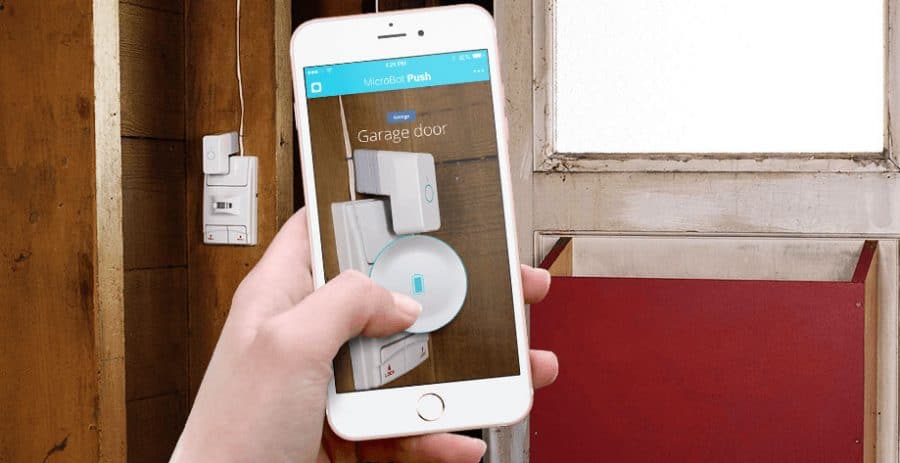
This is not necessarily a whole project, but more of a starting point. You can have a smart button that pushes what you want when you want it. It’s the perfect tool to turn any dumb device into a smart one.
For example, you can use it to turn on the lights, start the coffee maker, open the garage door, or whatever. You can even use it to press a key on your computer if you want.
The default use for this type of button is to control it from an app on your smartphone. But like the smart lights I mentioned earlier, you can also control it from your Raspberry Pi if you want to integrate it into a more meaningful project (e.g., start the air conditioner when the temperature exceeds a certain threshold).
This button is awesome and available at a very affordable price (check the price on Amazon). It can save you a lot of time and money for some projects, so it’s probably worth it.
You can find the documentation for the API on this GitHub project.
7 – Desktop notifier
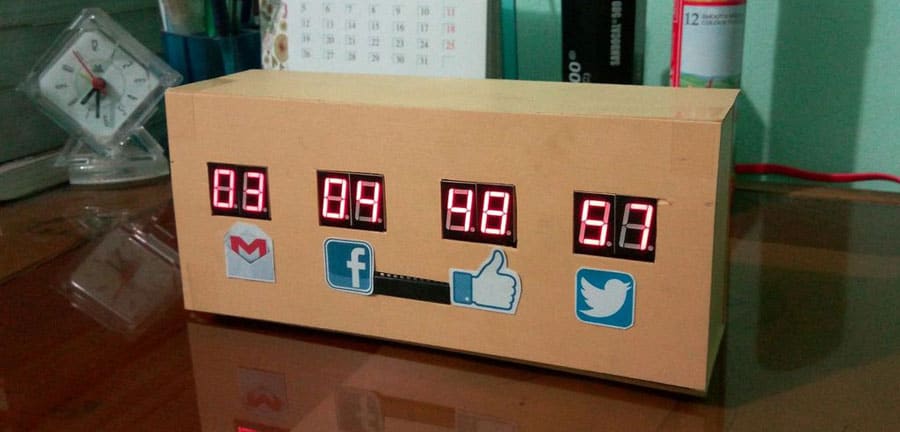
The purpose of this project is to create a desktop notification manager.
The project demonstrated here shows the number of pending emails and fans on your Facebook and Twitter pages, as well as the number of pending Facebook notifications.
Overall, it’s mainly a coding project to get the values from different web services (Facebook, Twitter, Gmail). And then some electronics to display these values on the LEDs.
It is possible to modify this project to show the counters you are interested in, but it is a good start and easy to set up. As is often the case, the idea is not to copy the original project, but to take inspiration from it and build something that is really meaningful to you.
Join Our Community!
Connect, learn, and grow with other Raspberry Pi enthusiasts. Support RaspberryTips and enjoy an ad-free reading experience. Get exclusive monthly video tutorials and many other benefits.
Learn moreSource: Instructables
8 – Baby monitor

A Raspberry Pi coupled with a webcam allows you to see and hear what’s going on in the room from another computer (or another Raspberry Pi). You can use it as a baby monitoring system, for example.
Unlike the previous project ideas, it is not cheaper than a commercial product, but much more interesting to set up. I just checked Amazon and you can find a baby monitor with camera and screen for the price of a Raspberry Pi, so it’s obviously just for fun :-).
You can use ZoneMinder for example to control the camera (check my tutorial here).
9 – Doorbell notifier
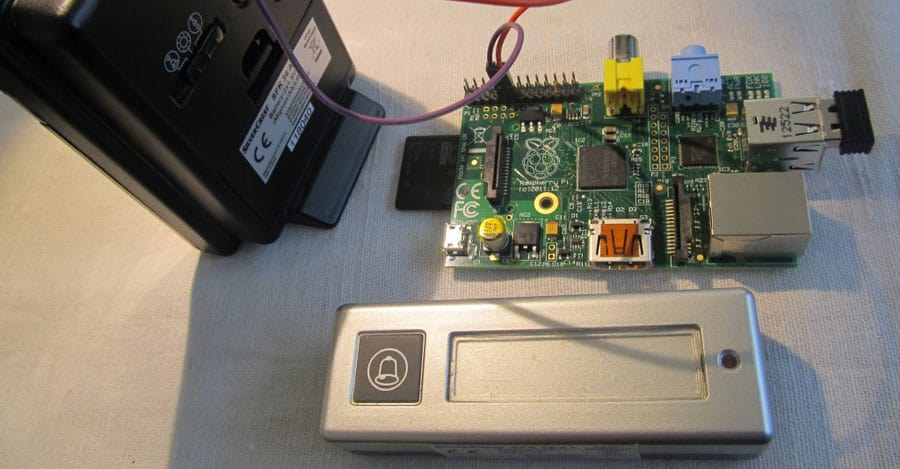
Would you like to know who rang the bell in your absence? Or even know who’s ringing at your door when you’re there to avoid various solicitations?
This is the goal of this project, which will email you each time someone rings your door, with the person’s photo.
This project is not as complicated to set up as it might seem. Just replace the original ringer with a wireless ringer (something like this should be ok, it’s cheap). You will then connect it to your Raspberry Pi and a classic webcam that will take the photo.
It might be a little weird to have all this stuff taped to your door in an apartment, but if you live in a house, it might be easier to get it right.
You’ll find all the needed information on the link below.
Source: Harizanov
10 – Christmas lights manager
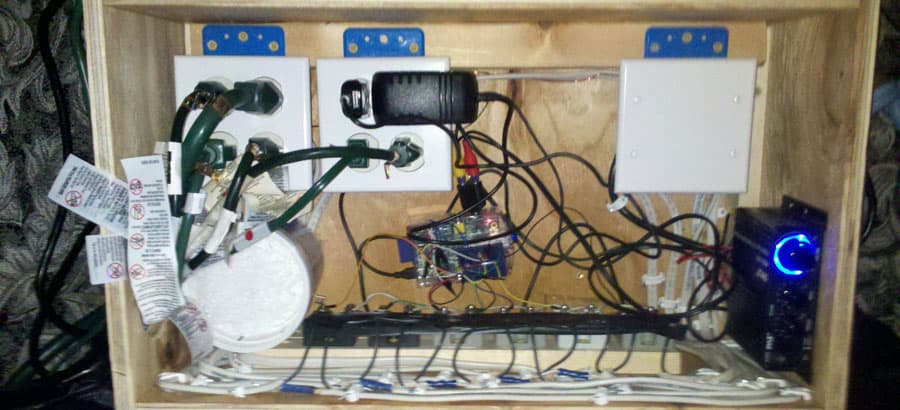
You’ve probably seen those holiday decorating videos that are all the rage in December. People have decorated their homes and gardens and set them to music for extraordinary results. You know, something like that:
Well, it’s possible to use a Raspberry Pi as the brain for this kind of project. As you can see in the photo of the installation above, it’s not an easy project to set up, but it’s worth it.
You will need a relay to plug all the lights (like this one on Amazon), a lot of wires and probably a waterproof outdoor speaker to play the music simultaneously.
The guy who recorded the video had a tutorial, but it’s no longer available. You can find similar projects on Instructables if needed.
11 – Homemade Amazon Echo
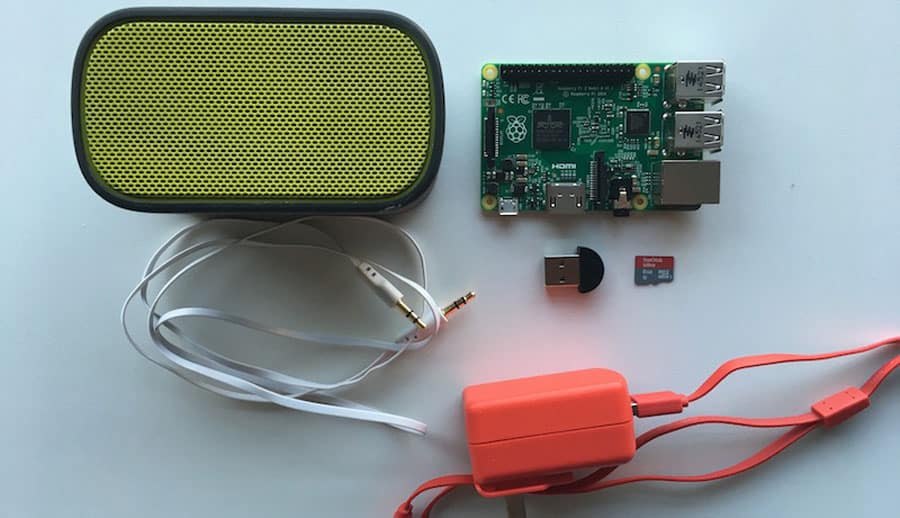
If you’re on this site, you’re probably familiar with Alexa, the home assistant developed by Amazon and sold through the Amazon Echo, for example.
Echo products are available at a price ranging from $20 to $150, which is interesting but not so far from a Raspberry Pi kit.
If you already have a Raspberry Pi, and probably even a microphone and a speaker, it is possible to create your own Amazon Echo. Indeed, the Amazon site for developers offers an API that allows you to call Alexa from any device.
The tutorial presented in the link below will let you know all the steps to follow.
Source: LifeHacker
12 – Music streaming box
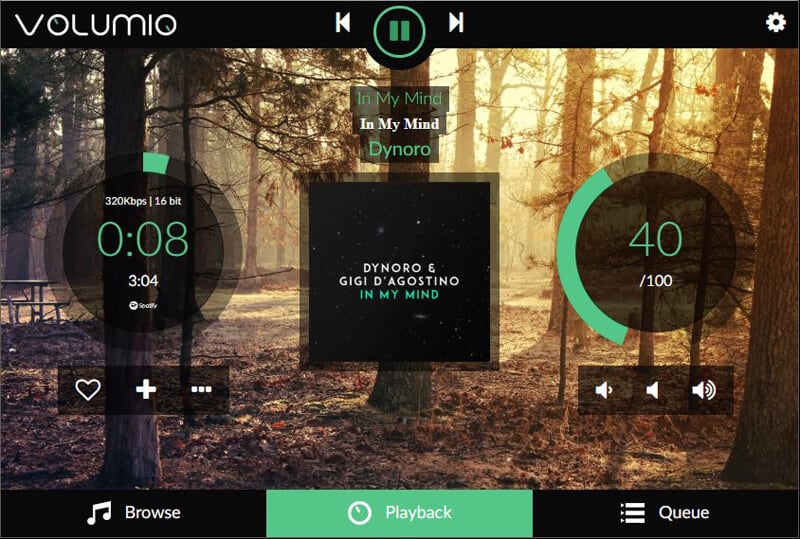
This project is equivalent to the smart TV project but for music only. You can build a music player with your Raspberry Pi and some basic hardware (basically a 3B+ starter kit will be enough).
Then you can install the Volumio distribution on your SD card, connect it to the network and your speaker, and that’s all, you’re done
Volumio allows you to play local music or audio streams from the Internet (like Spotify). Then you can control the box from your browser or smartphone; you don’t need a keyboard or remote control.
Check my video on the topic for more details:
I also have an entire tutorial with 3 ways (including Volumio) to install Spotify here.
13 – Plants watering
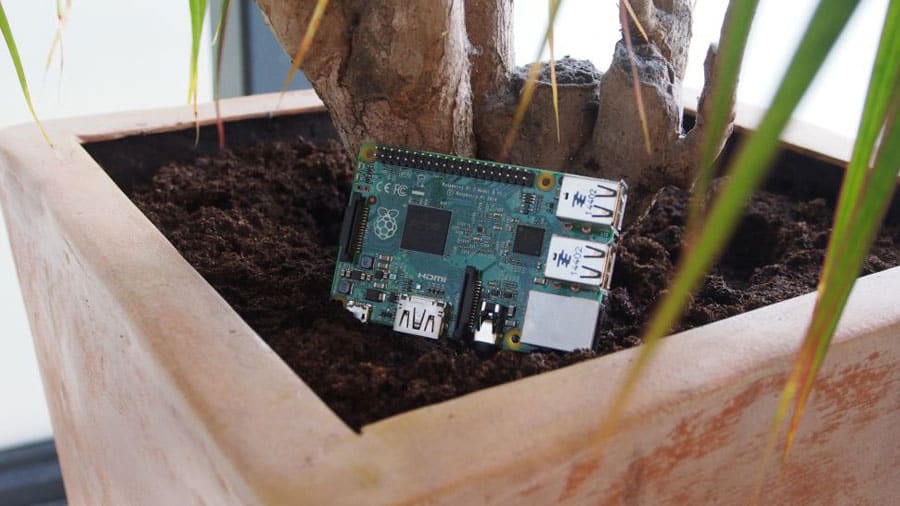
Ok, if you plant the Raspberry Pi like in the picture, it is not going to grow. But the purpose of this project is interesting. It’s about controlling the watering of plants with your Raspberry Pi.
The idea is to control the watering of the plants to do it only when it is necessary.
If you are lost in all these new words and abbreviations, request my free Raspberry Pi glossary here (PDF format)!
Download now
The application is based on the API of a weather service to know the weather and adjust the watering accordingly with a tiny pump like this one (Amazon).
The tutorial at the link below explains the requirements, the step-by-step procedure, and provides the complete source code. I have also seen projects using soil probes to adjust the watering to the needs of each plant, but that will be the next level.
Source: TechRadar
14 – Voice control

Again, this is not necessarily a full project, just an idea to build something useful for your home. You can use voice commands to control a Raspberry Pi (like the Alexa project mentioned above).
The idea is about the same as aliases commands on Linux: You specify the words you want it to remember and associate each alias with a Linux command to execute.
You can do the same with voice commands instead of alias. It is even possible to have it acknowledge your requests to make sure they have been understood and processed.
It won’t go as far as a project like Alexa, but it’s an interesting project with many potential applications. Imagine being able to start a service by voice instead of having to plug in a screen and keyboard, or maybe even controlling your robot kit by telling it what to do.
Source: TechRadar
15 – Weather station
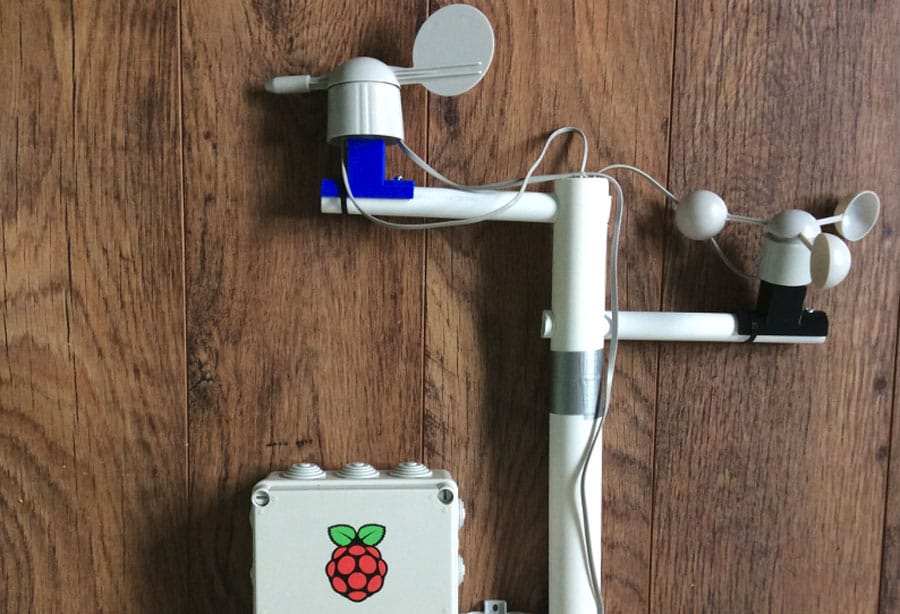
The next project is a weather station, that will collect a lot of information, like temperature, humidity, wind speed and direction. You can also add any custom sensors you want to complete the station.
This one is an advanced project, with many components, that will improve your electronics and programming skills.
If you are in the UK, you may be familiar with the hardware in the picture. In fact, the Raspberry Pi Foundation has sent thousands of such kits to schools across the country.
The software part is simple to put in place because the tutorial explains everything well.
But there are many components to buy, which you’ll then need to connect and assemble properly.
Feel free to check out these full packs on Amazon instead of buying those recommended in the tutorial. These packs will often be cheaper.
Source: RaspberryPi
16 – Home thermostat
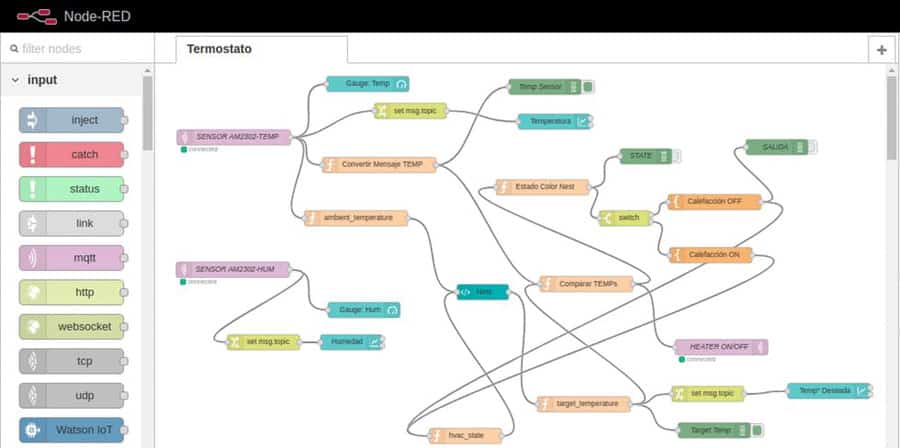
Do you know Nest? It was a big company that offered a whole range of products around the connected home, but it was mainly known for its smart thermostats (it’s now part of Google).
Well, the goal of this project is to try to do the same thing a lot cheaper.
The idea is to use a Raspberry with some extra components (like a temperature sensor) to regulate the temperature and humidity in your home. Then you’ll be able to control everything from a web interface or your smartphone.
It’s a project that’s not going to be easy to implement, but it’s got to be nice to complete. You can visit this page on Hackster for a complete tutorial.
And I have a starter guide for Node-Red here if you want to start with the basics.
17 – Google Assistant

I can’t put Alexa on this list without talking about Google Assistant. This project is very similar to that of Alexa, but for fans of “Ok Google”.
The steps will be pretty much the same:
- Install a microphone and speaker on the Raspberry Pi.
- Connect the Raspberry Pi with Google web services.
- Put everything in a nice box (wooden box here, but free to use whatever you prefer).
A real handyman made this tutorial, if this is not your case (just like me), remember that speakers on the port jack and a plastic box will work just as well ;-).
Source: Instructables
18 – Garage opener with car plate recognition
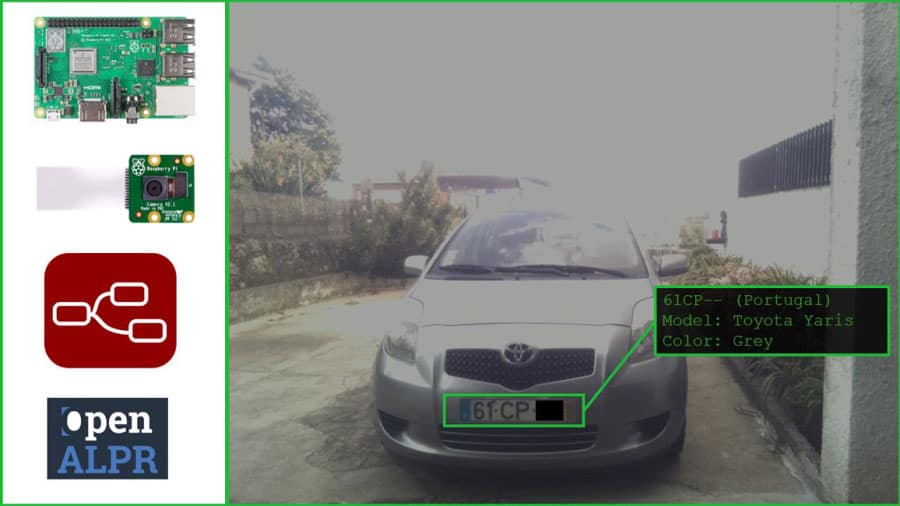
I saw a lot of garage door opening projects while researching this list. But it is probably the most complete, so you can adapt it to your needs.
It’s not just going to open your garage door like a typical remote.
It will also:
- Detect a car in front of the garage.
- Read the car’s license plate.
- Recognize the model of the car.
- Check that they match your whitelist.
- Open the garage door if it’s allowed to enter.
- Make sure the car is inside, then close the door.
All this works on a Raspberry Pi equipped with a simple camera.
Car plate verification uses the OpenALPR service, and the program triggers a GPIO event for opening and closing the garage doors.
Source: Randomnerdtutorials
19 – CCTV security cameras

A security camera is an easy project to set up with a Raspberry Pi. But in this one, you’ll learn how to build a complete home surveillance system and manage all cameras from one central system.
For example, you can use four Raspberry Pi Zero with their cameras and connect all to a central storage point (a Raspberry Pi 3B+ should be enough).
From your computer, you’ll access the hub to monitor each camera from a single web interface.
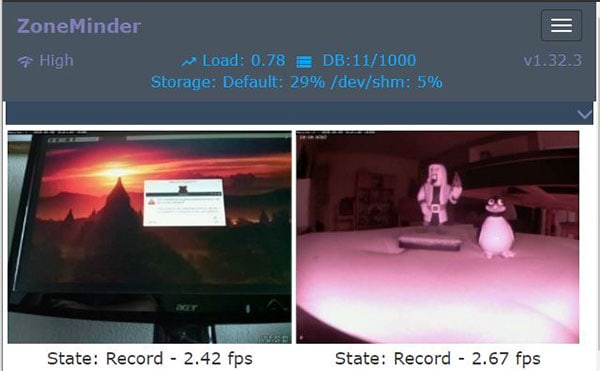
This installation perfectly replaces any complete video surveillance system that is available on the market, for a reasonable budget. Check my step-by-step tutorial here.
20 – KittyCam: Cat Face Detection in Node.js
Kittycam is an original project that turns your Raspberry Pi into a face detector for your cat.
In this project, Tomomi Imura explains how to set up a motion detector, take a picture, perform facial recognition of the cat, store the photos in the cloud and distribute them to the people concerned.
The only hardware used is a Raspberry Pi with a camera and a motion detector (like these on Amazon).
Once you have successfully set up Kittycam, you can improve it by using your imagination (kibble dispenser, opening a door or anything else). The linked project is built in Node.js, but it can be done similarly with Python or C/C++ if you prefer.
Related article: Getting Started With Node.js On Raspberry Pi (With examples)
Source: GirlieMac
21 – Smart microwave
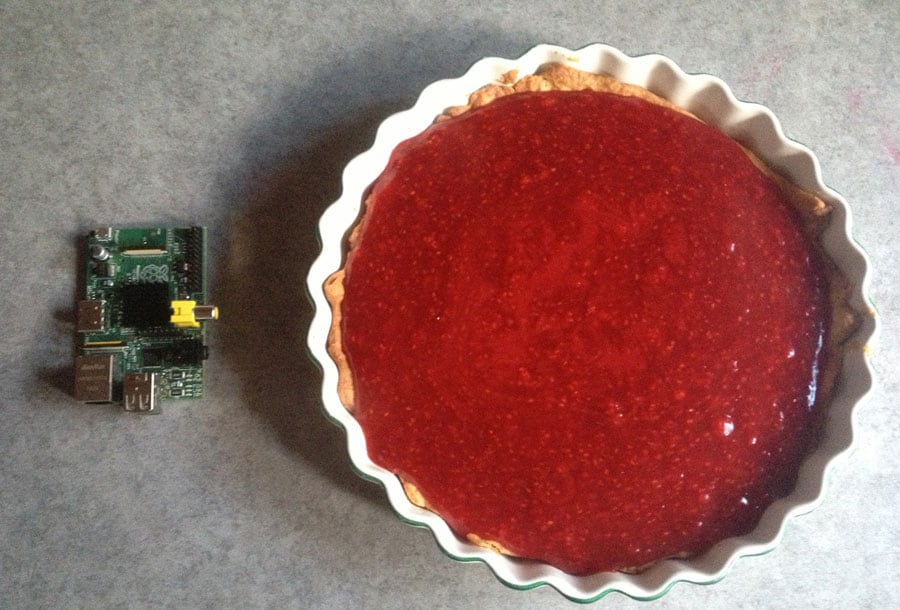
Ok, the guy who shared this project made funny pictures, but he also had good ideas.
The goal of this project is to control your microwave from your Raspberry Pi, but not only.
At the end of this project, your microwave could:
- Be controlled with voice commands.
- Use a barcode scanner to look up cooking instructions on the internet. (yes, you can easily find USB or Bluetooth barcode scanner on Amazon)
- Make nicer sounds.
- Be accessed via a web page to control it.
Here is a video demonstration:
Yes, it’s a remarkable project that deserves his place on this list.
Source: IndieGogo
22 – Arcade table
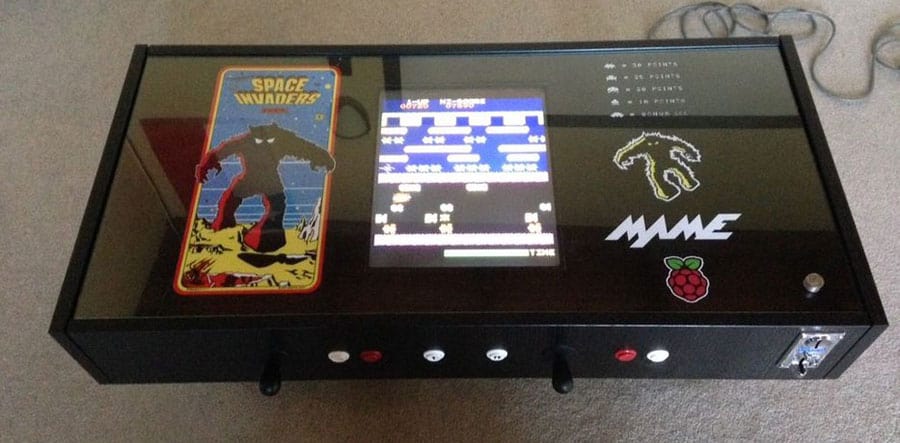
You can find a lot of tutorials online for making your own arcade kiosks. The basic idea is always the same: a Raspberry Pi, a video game emulator and joysticks and buttons of all kinds.
The main thing that changes between all these projects is the creativity of the designer. Everyone starts from their favorite format, whether it is a classic arcade terminal, a control table with a wall-mounted TV for display, or like here, all integrated into a table.
I want to share this tutorial because everything is well explained and easy to follow, whether it is preparing the table itself or installing the Raspberry Pi.
Send me your pictures when you finish this one. I have many articles on how to use Retropie after that (13 great tips here, for example), but I’m not necessarily a good enough DIYer to share those kinds of tutorials on the site.
Source: Instructables
23 – Lawnmower robot
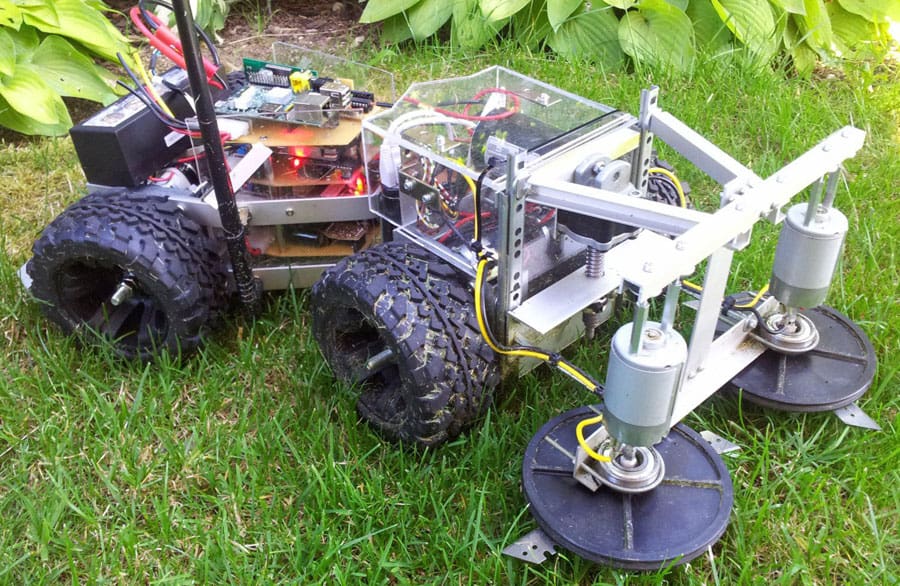
Yes … that’s exactly what you think!
This guy has created a lawn-mowing robot based on a Raspberry Pi.
Like a commercial robot (yes, it exists), it will automatically mow your lawn, within a predefined area.
Boundaries are created by ultrasonic positioning nodes and a battery changing station is installed to extend the mowing time.
Everything has been thought out in the project design.
For example, a web interface makes it possible to control the robot remotely.
There is even a feature to change the role of the robot (for example, to turn it into a snow plow in winter ^^).
I highly recommend taking a look at this project, even if it’s just out of curiosity
There is a video that deserves a look.
Source: Hackaday
24 – Smart aquarium

After cats and dogs, here are our fish friends :). After that, we will have gone through all the pets (and no, I have not planned anything for snakes and ferrets).
The goal of this project is to maintain the temperature of your aquarium. A sensor will take care of constantly measuring the temperature and communicating it to any computer on the network.
This is the first step towards “intelligent aquariums”. For example, I have also seen projects that distribute food to the fish at pre-determined times or even auto-refill ideas.
Source: ReadWrite
It's a free PDF guide containing every Raspberry Pi Linux command you should know!
Download now
25 – Pool control

And the last project on this list is a big one.
We dive into the automation of your pool (pun intended).
Pool builders are offering more and more of this type of service when installing a new pool. But as the guy explains in the tutorial, it’s a pretty expensive add-on (about $10,000 according to him).
The goal of this project is to do it with even less than $1000 of hardware and a few hours to get the same result. This project allows you to control a spa and a swimming pool, and you can adapt it to your existing installations.
The web interface allows controlling especially pumps, heating and chlorine.
Be careful though, I think this is the only project on this list that uses high voltage circuitry.
If you are not an electrician and have no electrical skills, you may need to hire a professional for this project.
Source: Instructables
It's a free PDF guide containing every Raspberry Pi Linux command you should know!
Download now
If you are looking for exclusive tutorials, I post a new course each month, available for premium members only. Join the community to get access to all of them right now!
Conclusion
Here we are at the end of my favorite home projects list.
You now have a good overview of the possibilities of the Raspberry Pi at home, and I hope that it will have made you want to test some of them.
It’s not an exhaustive list as there is almost no limit, for example, Raspberry Pi at home is often used for 3D printing, file server or whole network ad-blocker.
And for more general project ideas, check out my ultimate list of suggestions here: All The Best Raspberry Pi Project Ideas (with links). You can’t go wrong with these ideas.

Whenever you’re ready, here are other ways I can help you:
The RaspberryTips Community: If you want to hang out with me and other Raspberry Pi fans, you can join the community. I share exclusive tutorials and behind-the-scenes content there. Premium members can also visit the website without ads.
Master your Raspberry Pi in 30 days: If you are looking for the best tips to become an expert on Raspberry Pi, this book is for you. Learn useful Linux skills and practice multiple projects with step-by-step guides.
The Raspberry Pi Bootcamp: Understand everything about the Raspberry Pi, stop searching for help all the time, and finally enjoy completing your projects.
Master Python on Raspberry Pi: Create, understand, and improve any Python script for your Raspberry Pi. Learn the essentials step-by-step without losing time understanding useless concepts.
You can also find all my recommendations for tools and hardware on this page.

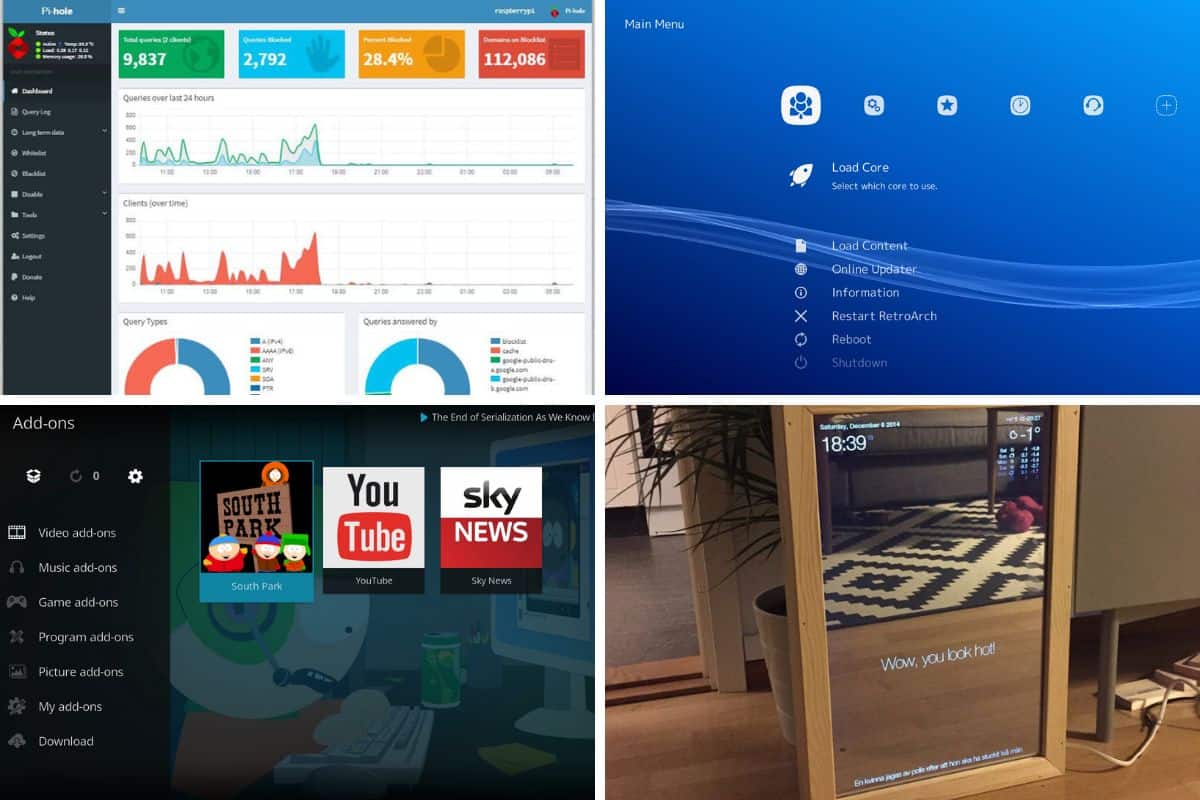

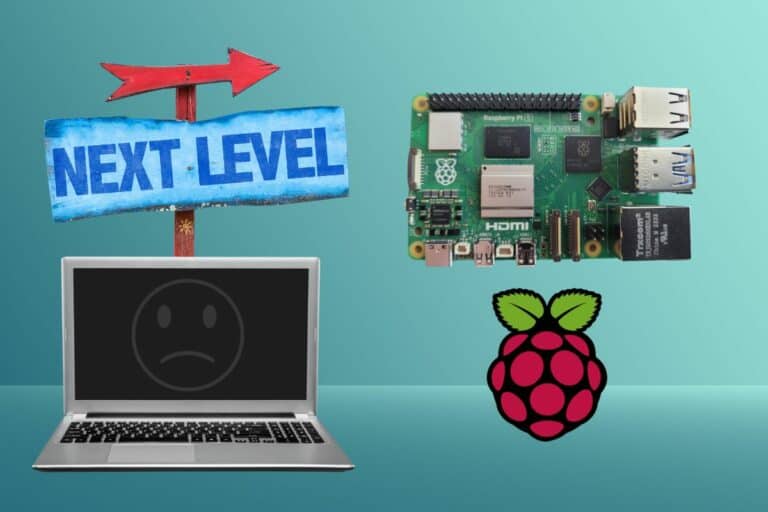


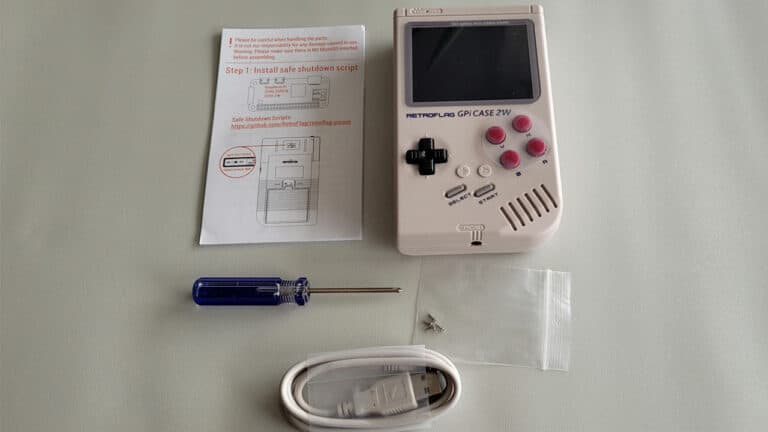

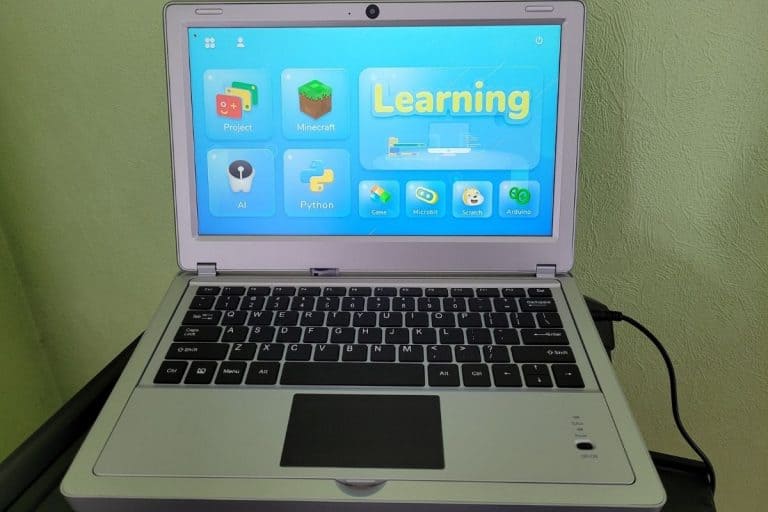
How about a network wide as blocker?